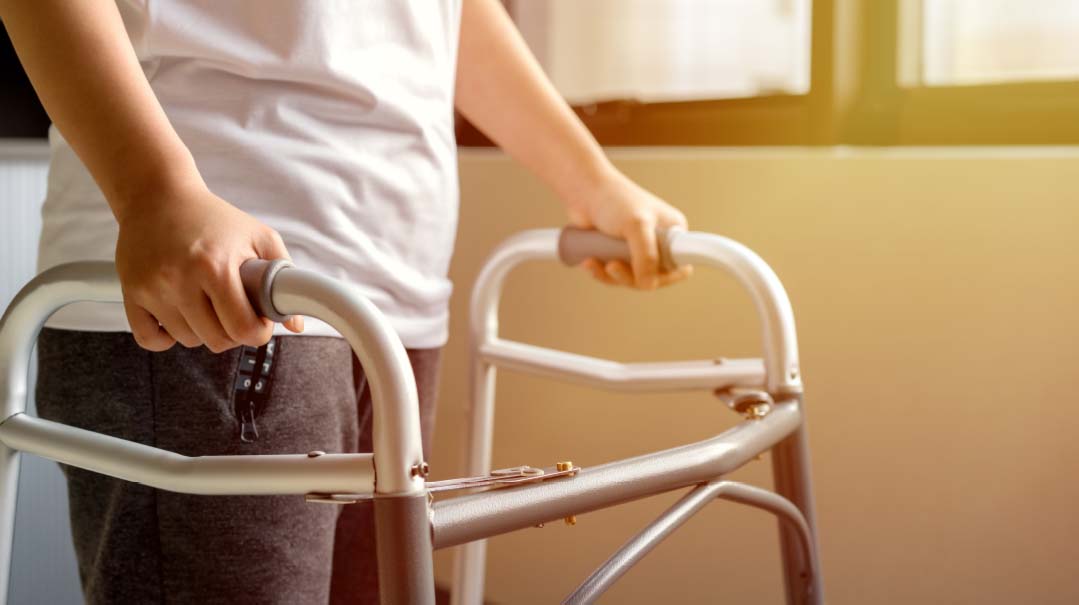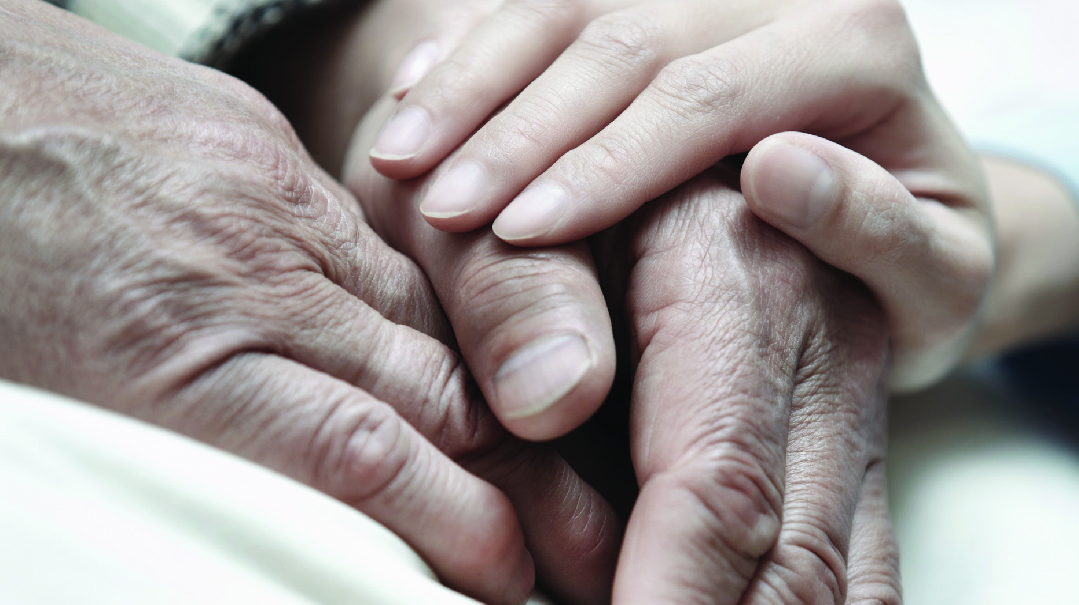First-Aid Training

I’m just a regular guy — why am I losing my mind? Will I ever feel normal again?

At the end of my second year of beis medrash, when I was 19, I decided that I wanted to go to yeshivah in Eretz Yisrael the following year, even though boys in my yeshivah usually waited until after third- or fourth-year beis midrash before leaving to Eretz Yisrael. But my rebbi, Rabbi Perlbaum, nixed the idea.
“Reuven,” he said, “I don’t think you’re ready for Eretz Yisrael quite yet. Wait another year, and then you’ll be on the right level of learning.”
I was sure this was a bubbe maaseh, because the three boys in my shiur who were going to Eretz Yisrael the following year were actually on a lower level in learning than I was. The difference, I thought bitterly, is that their fathers have money and connections, so he’s going to get them in anyway.
I was furious with Rabbi Perlbaum, but powerless to flout his decision. Without his recommendation, no yeshivah in Eretz Yisrael would take me. But I made up my mind that even if I couldn’t go to Eretz Yisrael, I would not stay in this yeshivah for another year. I’d go somewhere else, and then move on to Eretz Yisrael from there.
A cousin of mine was learning in a different yeshivah, and he convinced me to join him.
On Rosh Chodesh Elul, the day I first stepped foot into my new yeshivah, I realized that I had made a huge mistake: This yeshivah was way too strict for me. I was a good boy with a good head who enjoyed learning, but I also enjoyed having fun, and the boys in this yeshivah didn’t seem know what the word “fun” meant. I hated the place from day one.
All right, Reuven, I told myself. You’ll get through the year, and then, next year, when Rabbi Perlbaum doesn’t have a say in the matter, you’ll go to Eretz Yisrael.
For most of Elul zeman, I plowed through, showing up at every seder and sitting with my Gemara like the rest of the bochurim, even though I felt completely out of place. But then, one night, shortly before Rosh Hashanah, I couldn’t fall asleep, and I spent the night tossing and turning. The next morning, I felt nervous and tense, and my body seemed completely out of whack. I was experiencing waves of fogginess and dizziness, and I couldn’t breathe.
All day, I couldn’t think straight. I couldn’t sit still, I couldn’t learn, and I felt extremely tense and nervous. That night, again, I tossed and turned for hours, and in the morning I continued to feel dizzy and horrible. I had never experienced such weird sensations in my life.
I went home for Shabbos and told my parents what I was feeling. “I don’t know what’s happening to me,” I said.
They didn’t know, either. I went back to yeshivah, but the feelings got worse, to the point that I couldn’t bear to face another day. Each morning, and throughout the day, I would think to myself, I wish this day would be over already. I did not feel normal for even a second, and I would count the minutes until I could finally climb into bed again for another sleepless night.
At times during the day, I would feel like I was choking and couldn’t breathe. Often, I felt so nauseated that I thought I would vomit. The rest of the day, I walked around dizzy and in a fog, unable to see straight and terrified of when the next attack would hit.
I found myself wishing I would have a nervous breakdown. My whole day was revolving around my weird, foggy feelings and panicky sensations, and after feeling this way for weeks, I was convinced there would be no end. Why is this happening to me? I yelled inwardly. I’m just a regular guy — why am I losing my mind? Will I ever feel normal again?
Unable to focus on anything or do anything productive, I started entertaining thoughts of taking my own life, which made me even more terrified.
Before Yom Kippur, my parents decided to contact Relief, the mental health referral organization.
“It sounds like your son is suffering from anxiety and panic attacks,” they were told. “This is extremely common, and very treatable.”
Relief recommended a therapist who specialized in cognitive behavioral therapy, and I began seeing him. Mr. Cayman, the therapist, could not identify any underlying issues that had caused my anxiety. I had a warm, loving family, I was close to my parents, and my upbringing had been free of trauma. The only apparent trigger was the fact that I was unhappy in my yeshivah and felt trapped in the dormitory setting.
“But the problem isn’t really the problem,” he explained. “It’s okay to have anxiety in a new, uncomfortable situation. What’s not okay is to panic about the anxiety.”
Through CBT, I realized that dwelling on the fogginess I was experiencing was actually making me more anxious. Mr. Cayman guided me to make peace with the fogginess and stop trying to fight it.
“It might go away,” he told me, “or it might not. It’s possible that you’ll have it for the rest of your life. But even if you do, you can live with it. It’s not the actual fogginess that’s scaring you, it’s your scary thoughts about the fogginess.”
He taught me all sorts of exercises to deal with the fogginess. “Look directly at the fog,” he guided me, “and envision it as something tangible in front of you. Accept that it’s there. Tell yourself there might not be any reason why it’s there; it just is.”
None of my symptoms, he pointed out, were truly cause for concern. So I felt nauseated. So I felt dizzy. So I couldn’t sleep.
“Let the thoughts and feelings be there,” Mr. Cayman advised. “They’ll sort themselves out eventually. But if you fixate on them and allow them to scare you, you’ll make them worse.”
CBT did not get rid of the fogginess, but it did change the way I related to it. When I awoke in the morning feeling disoriented and out of sorts, I told myself, Yeah, I’m not feeling so great. But the feeling will pass, and I’m going to go on with my day.
Each time feelings of panic starting welling up inside me, I would tell myself, The fogginess is there now, but there’s nothing to do about it. Let me go daven and learn and get on with life. Maybe tomorrow will be better.
To my surprise, I found that tomorrow often was better — and even today was often better, because at times I actually forgot about the fogginess because I was busy with other things and not thinking about how miserable I was feeling.
“If your mind is not dwelling on the fogginess, the fogginess can go away,” Mr. Cayman explained. “But when you focus on it, you give it staying power.”
Even a thought as scary as the idea that I might hurt myself did not have to be given any power. “It’s just a thought,” Mr. Cayman said, after determining that I was not really suicidal. “You know you’re not going to hurt yourself. If you were serious about doing that, you would have done it already. So just let the thought drift around your mind until the next thought comes. You don’t have to try to get rid of it, just let it float away.”
Intrusive thoughts like these, he told me, can be compared to a hungry cat. “If you give a cat food one day, it’s going to keep coming back and scratching at your door all day. But if you don’t feed it, eventually it will give up and stop coming back.”
Anxiety works the same way, he explained. “The more you feed it, the more it scratches away at your sanity. And you feed anxiety by fighting it.”
I went for therapy during bein hasedorim, slipping out of yeshivah quietly so that none of the other bochurim realized where I was going. I never told anyone that I was going for therapy and no one in the yeshivah ever noticed that anything was amiss with me.
Eventually, I started feeling normal again. I became more comfortable in my new yeshivah and actually made friends, and by the end of the winter zeman, the fogginess, panic attacks, and anxiety were all but forgotten. Here and there, I would start feeling the weird sensations rising inside me, but I would simply acknowledge their presence and continue going about my day, and the feelings would hardly make a dent in my existence.
The next year, I went off to Eretz Yisrael as planned, mentally thanking Rabbi Perlbaum for insisting that I stay in America for another year. Had I experienced anxiety and panic attacks for the first time when I was 6,000 miles away from my family, I think it would have been a lot harder for me to handle.
Starting yeshivah in Eretz Yisrael was a bit of an upheaval, but because I was equipped to deal with feelings of anxiety, I had no trouble adapting to my new environment. If I ever awoke with that horrible feeling of fogginess, I simply put my CBT tools to use, viewing scary thoughts or negative feelings as balloons that flitted benignly in and out of my consciousness. As long as I wasn’t blowing air into these balloons, they had no bearing on my life or wellbeing.
By the time I left Eretz Yisrael and was ready for shidduchim, my bout with anxiety was a distant memory. When I called Mr. Cayman to ask him what to say about it to a prospective wife, he advised me, based on the halachic guidance he had received, to disclose that I had been through a rough time, but to downplay it.
“Don’t use the word ‘anxiety,’ ” he said. “There’s no reason to scare a girl off. Just use the word ‘nervousness.’ ”
When I began dating Rachel, my future wife, I asked my rebbi for a more specific psak. “Just say there was a time when you were a little nervous, so you got some help and learned how to deal with it,” he told me. He felt that after the fourth date would be the right time to make this disclosure.
After I told Rachel about my “little tekufah of nervousness,” she got a little nervous herself. Her parents made some more inquiries about me, and on our next date she asked me for more details.
I explained to her what had happened and assured her that I knew how to deal with anxiety and that it would not affect her. Shortly afterward we got engaged.
About a year after our wedding, Rachel gave birth to a baby boy. The birth was protracted and complicated, and although she and the baby were declared healthy, she was in a lot of pain and felt very weak. The first time she stood up, she practically vomited, and the next day, Monday, when she went to eat lunch, she felt dizzy and nauseated again. The nurses assured her that she was fine and encouraged her to eat and drink, telling her that the more she ate, the better she would feel. But she felt queasy and had no appetite, and she thought the nurses were dismissing her concerns.
Each time I came to visit her, I found her more agitated and upset than the time before. “There’s something wrong with me,” she kept telling me, “but the nurses don’t believe me!”
Monday afternoon, I went to speak to the head nurse myself.
“Your wife is fine,” she told me. “She felt sick the first time she got out of bed, but that’s very normal, and we’ve been monitoring her vital signs and she’s perfectly okay. She went through a rough birth and now she’s weak and in pain, so she thinks there’s something wrong with her, but there isn’t.”
Understanding that Rachel was somewhat traumatized, I stayed with her as much of the day as I could, even prevailing upon the nurses to allow me to stay past visiting hours. It was a good thing I stuck around, because at around 11 p.m. a nurse from the baby nursery came to inform us that our baby had a low-grade fever.
“It’s probably just a virus,” she explained, “but protocol requires that we run tests to rule out anything serious. Right now there is no pediatrician in the nursery, so you should take the baby down to the pediatric emergency room.”
Rachel was in no state to leave the maternity ward, so I took the baby down to the pediatric ER, where I ended up sitting with him for several hours as various doctors and nurses took his temperature, poked him for blood and spinal fluid, and hooked him up to IV antibiotics. Each one, in turn, told me that they were not concerned but that I should wait for a senior doctor to take a look at him. While I waited, Rachel kept calling me from upstairs to find out what was doing.
“What’s with the baby?” she kept asking, breathing heavily into the phone. “Why is it taking so long? I feel so dizzy! I’m going to throw up!”
Around midnight, the nurse took Rachel’s vital signs and found that her blood pressure was slightly elevated. When she asked Rachel how she was feeling and heard her say, “I feel dizzy,” she became alarmed.
“We need to get your blood pressure monitored more closely,” she told her. “We’re going to have to take you to the ER.”
Now my baby was in the pediatric emergency room and my wife was in the gynecologic emergency room. I myself was exhausted and uncomfortable, sitting on a chair beside the baby’s bassinet, but I kept telling myself that my wife and baby were both fine and that the hospital staff was just taking the necessary precautions.
At about 2 a.m., the baby was finally seen by a senior pediatrician, who authorized his return to the nursery under special supervision. I deposited him in the nursery and then raced over to the emergency area where Rachel was.
When I finally saw her, I hardly recognized her. She was hyperventilating, and the expression of terror on her face made her look like a different person. When she started to speak, I again didn’t recognize her. The Rachel I knew was reserved and dignified, but this person was talking loudly and saying weird things.
“I can’t breathe!” she gasped. “I’m dying! Nurse, get me a drink! Hey, there’s someone out there in the hall who needs a refuah sheleimah! REFUAH SHELEIMAH!”
She’s lost her mind, I thought. She’s never going to be normal again.
Wait — déjà vu! Where had I experienced such a feeling before?
I myself had been in such a state, just a few years earlier. And I knew exactly how to handle it.
“Rachel,” I said gently, “remember I told you that I went through a bout of anxiety back when I started beis midrash? Let me share with you some of the tricks I learned back then.”
I understood that her weird behavior was a desperate attempt to distract herself from the terror she was experiencing. She was afraid that something was wrong with her, and she was afraid that something was wrong with the baby. What she didn’t realize was that the real problem was her reaction to her fears, and that by trying to distract herself she was actually giving the fears legitimacy. Feeding the hungry cat, as Mr. Cayman would have said.
“When you feel that you’re dizzy and nauseated, or that you can’t breathe,” I told her, “just look at the feeling and give it a picture in your mind — a color, a texture, a taste.”
Upstairs, in the maternity ward, the staff had pooh-poohed Rachel’s symptoms, while here, in the ER, the staff was taking her symptoms very seriously. Too seriously, in my opinion. This was a young woman who had just had her first baby and needed some rest and TLC — neither of which she was getting in the hospital. On top of that, her baby had been the emergency room for several hours. And it was 3 a.m. Who wouldn’t have high blood pressure under those circumstances?
“I think my wife just needs a proper bed,” I told the attending doctor. “Her blood pressure is high because she’s overwrought and panicky. If you let her out of here she’ll be able to relax.”
“Hypertension in a new mother is something we can’t ignore,” he replied. “You’re right that it’s probably nothing, but we have to keep monitoring her just to be on the safe side.”
There was only one way to get Rachel’s blood pressure down, I knew, and that was by getting her to relax. I spent the rest of the night drawing on my experience with CBT to help her cope with her feelings of worry and panic. “You probably won’t stop breathing,” I told her. “But if you do, nothing will happen. You might pass out, and then you’ll rest a little, and that will help you come back to yourself. The thought of not being able to breathe is just like any other harmless thought that passes through your head. If you let it scare you, you’ll give it power, but if you accept it and allow it to drift in and out of your mind, it’ll go away. Trust me, I’ve been there.”
I could see the tension draining from Rachel’s face as I talked to her, and she began to look and sound more and more like the Rachel I knew.
It was no surprise to me that her next blood pressure reading was significantly lower, and that her subsequent readings were back in the normal range. When I pointed this out to the doctor, he agreed that she could be moved back upstairs to the maternity ward. But then there was a shift change, and the morning staff told me not to expect anything to happen until at least 9 a.m. I was practically falling off my feet, not having slept all night and not having even a chair to sit on.
Rachel was not actually moved until midday, by which time we were both crazed with exhaustion. But she was calmer, and no longer felt as though she was about to die.
Over the next couple of days, scary thoughts kept haunting her, and at one point she was convinced that the baby was deathly ill. But I just kept talking her through her fears while sharing my CBT skills with her, and by the time the baby finished his course of antibiotics and was ready to be discharged, she was back to her normal, calm self.
When we arrived at the home of Rachel’s parents, where she recuperated for the next week, she was feeling tired and slightly overwhelmed by new motherhood, but overall in good shape.
Worn out as Rachel and I both were, we felt a certain peace, as well as a new kinship. Thanks to my own bout of anxiety, I had had the tools to help her through a mental health crisis of her own.
I’ve since learned that postpartum anxiety and psychosis are quite common — even if they don’t get nearly as much press as postpartum depression — and I shudder to think of what might have happened to my wife, in her weakened postpartum state, had she not received the emotional first-aid I was able to provide.
Back when I had battled anxiety as a bochur, I wondered why I had to endure that misery. Now, not only do I understand why Hashem put me through that, I’m actually grateful that He did.
(Originally featured in Mishpacha, Issue 787)
Oops! We could not locate your form.











